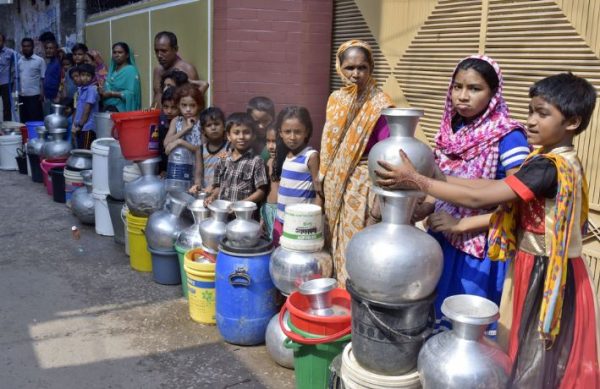Dams are Bad News for Water Resource Management

When people turn to dams to solve their water shortage issue, they lead the communities to live beyond their water means and complicate the problem further, this appears to be the case according to the paper in Journal Nature.
The study says, “The expansion of reservoirs to cope with droughts and water shortages is hotly debated in many places around the world. We argue that there are two counterintuitive dynamics that should be considered in this debate: supply–demand cycles and reservoir effects. Supply–demand cycles describe instances where increasing water supply enables higher water demand, which can quickly offset the initial benefits of reservoirs.”
The paper takes Las Vegas as a textbook case. Decades ago the population was projected to reach 400,000 by 2000, so the city built a pipeline to tap into Lake Mead, a reservoir created by Hoover Dam. The population ballooned nearly four times higher than anticipated.
The Paper further explains the sense of abundance or “Reservoir effects refer to cases where over-reliance on reservoirs increases vulnerability and therefore increases the potential damage caused by droughts.”
Dams or other water-supply infrastructure such as desalination plants can also make communities less resilient because they mask droughts, says the paper’s lead author, Giuliano Di Baldassarre, a professor of hydrology at Uppsala University in Sweden.
Rather than build dams, the authors recommend reducing consumption. That may sound like common sense, but a dam-building boom is underway in developing countries.
We, humans, consume about 4,600km3 of water every year – around twice as much as there is in all the planet’s rivers – and this is estimated to increase by a rate of one percent each year. Countries including Brazil, China, Ethiopia, India, Mozambique, Rwanda and Turkey are building dams to satisfy demand.
So bad is this deteriorating situation that water crisis has been ranked as one of the world’s top risks by the World Economic Forum.
The United Nations has warned that just seven years from now, there will be 1.8 billion people experiencing absolute water scarcity, where the natural water resources are unable to supply demand. Two thirds of the world will be water-stressed enough to see demands exceed supply for certain periods of the year.
The hydropower lobby, on the other hand, is leaving no stone unturned to get selected as a Renewable energy source. According to the article published in the same journal Nature , Hydropower dams can help mitigate the global warming impact of wetlands.
The article goes on to say that- Methane is responsible for one-fifth of the rise in average global temperatures over the past century. Approximately half of the roughly 600 million tonnes released every year comes from natural sources — mainly wetlands. In tropical regions such as the Amazon and Africa, fresh water releases almost as much carbon to the atmosphere as forests and agriculture mop up. Hydropower projects, already controversial for their social and environmental impacts, are now routinely opposed because they are said to add to greenhouse-gas emissions and aggravate global warming. Yet dams that are well planned, constructed and managed can deliver decades of clean, cheap energy and help to mitigate climate change.

It further adds-These wider benefits are seldom acknowledged. And in a rapidly warming world, we cannot afford blind spots. Researchers need to take a systems approach to carbon emissions and sequestrations from fresh waters. And the roles of dams and other water-management interventions need to be reassessed from the perspective of climate change: in some places, they might help communities and the environment more than they damage them.
The thoughts expressed do not fully explain why many institutions are moving away from large power projects which includes Coal and other fossil fuel power plants. He does not elaborate on the facts that every project inundates entire city or huge swathes of land to make these megastructures. They might have been a solution few decades ago, but with new technology like solar, wind turbine, geothermal and other innovations, the need for such huge projects have lost their sheen. People and economies not to mention financial institutes do not want to create investment bubbles and hold up their finances for say 50-90 years. One thing is clear, hydropower dams continue to present complex and diverse factors that will need to be strategically assessed by scientists, environmentalists, policymakers, water managers, and financiers alike.










